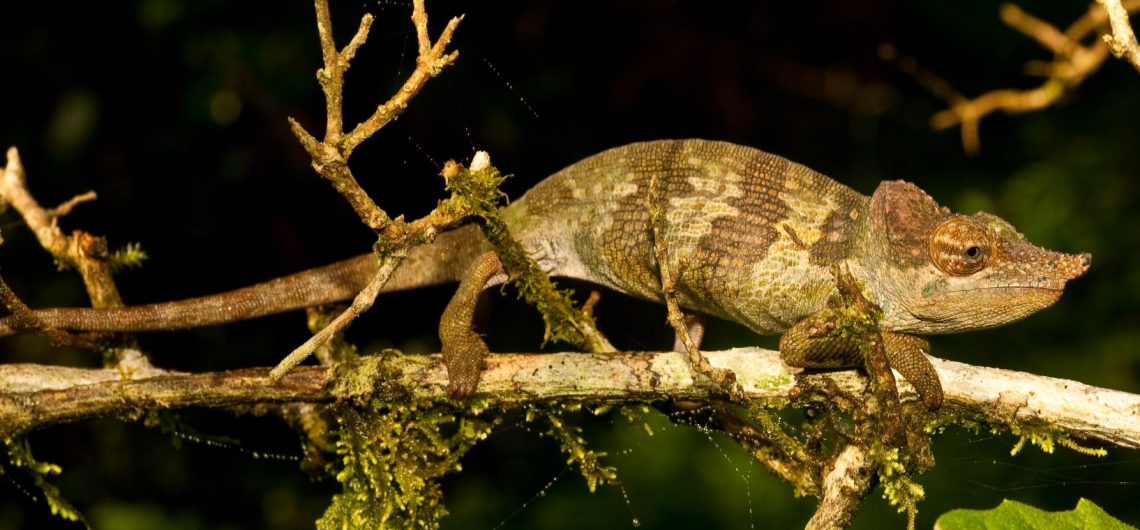- The brown and green chameleon with scattered blue spots was named Kinyongia msuyae, after Charles A. Msuya, a pioneer of Tanzanian herpetology who collected the first known specimen of the new species.
- The chameleon was found only in only four forest fragments, two in the Udzungwa Mountains and two in the Livingstone Mountains — spanning the so-called so-called “Makambako Gap.”
- “It is very clear now that the so-called Makambako Gap doesn’t exist zoologically, and that the Southern Highlands is every bit as biodiverse and endemic-rich as all other Eastern Arc Mountains,” according to Tim Davenport, the director of WCS’s Tanzania Program and co-discoverer of the new chameleon.
The Wildlife Conservation Society announced yesterday that a team of scientists has discovered a new species of chameleon in the mountainous rainforests of Tanzania.
The brown and green chameleon with scattered blue spots was named Kinyongia msuyae, after Charles A. Msuya, a pioneer of Tanzanian herpetology who collected the first known specimen of the new species, according to a statement by WCS.
The chameleon was found only in only four forest fragments, two in the Udzungwa Mountains and two in the Livingstone Mountains. Their habitat spans the so-called “Makambako Gap,” a “biogeographical barrier” scientists believe to exist between the distinct faunas of Tanzania’s Eastern Arc Mountains and the relatively little-known Southern Highlands.
But many scientists at the Wildlife Conservation Society, including Tim Davenport, the director of WCS’s Tanzania Program and co-discoverer of the new chameleon, do not believe the Makambako Gap really exists, arguing that the Southern Highlands are every bit as important in terms of biodiversity as the Eastern Arc Mountains.
Furthermore, according to Davenport, the discovery of Kinyongia msuyae provides further evidence to back the argument, as it shows closer biological affinities between the Udzungwa Mountains, part of the Eastern Arc Mountains, and the Livingstone Mountains of the Southern Highlands.
Davenport and a team of scientists described Kinyongia msuyae in a study published by the journal Acta Herpetologica late last year.
Several other finds in Tanzania’s Southern Highlands in recent years lend even more credence to the theory that there is no gap. In 2003, WCS discovered the kipunji — a species of primate that turned out to be an entirely new genus, the first found in Africa in nearly a century — and in 2012, WCS found Matilda’s horned viper, a new species of snake.
“Along with our discoveries of the Kipunji, Matilda’s horned viper and other reptiles and frogs, this new chameleon really seals the deal as regards the boundary of the Eastern Arcs,” Davenport said in a statement.
“It is very clear now that the so-called Makambako Gap doesn’t exist zoologically, and that the Southern Highlands is every bit as biodiverse and endemic-rich as all other Eastern Arc Mountains. With its own unique fauna and flora the region thus warrants as much protection as we can possibly afford it.”
![]()


Comments